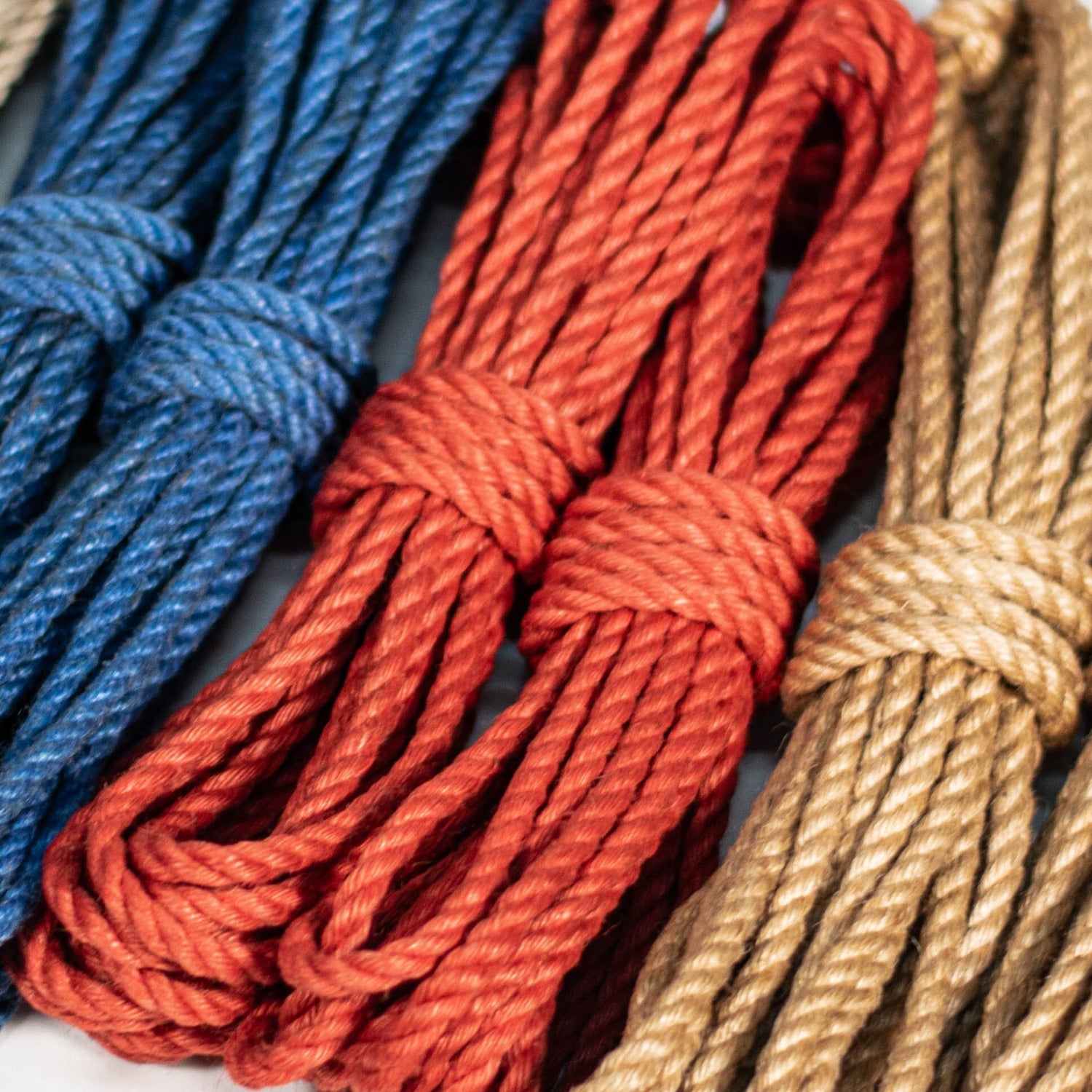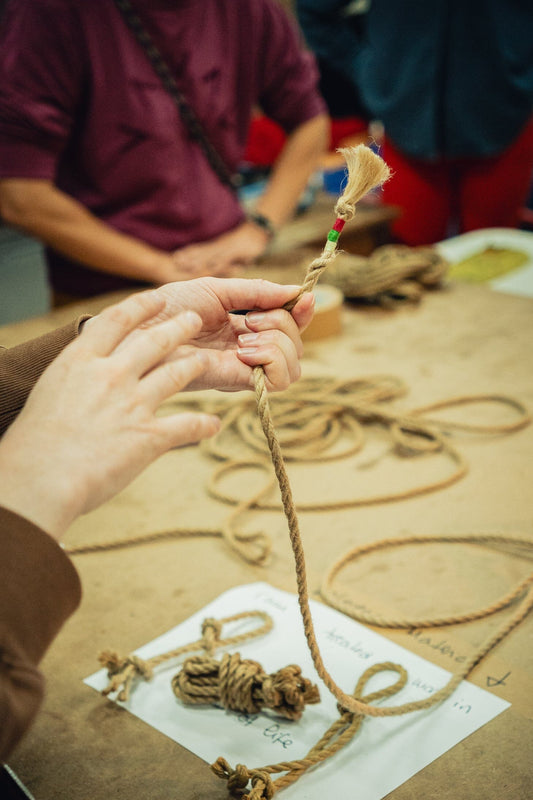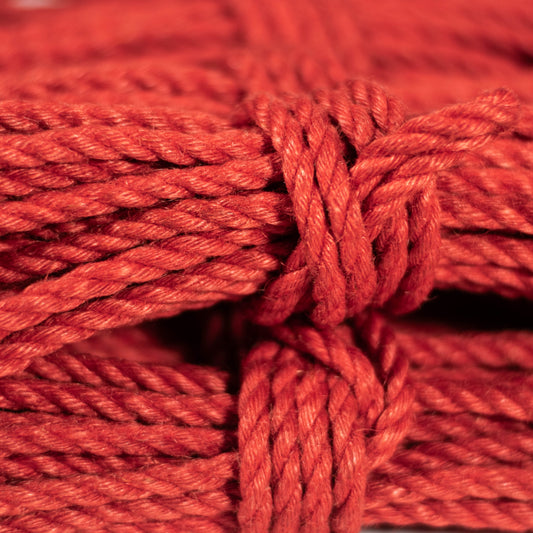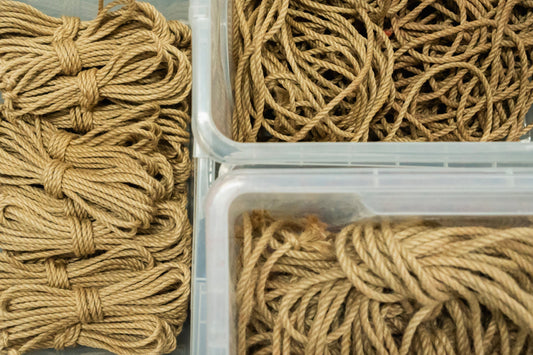Did you know that expert shibari practitioners seldom replace their rope kits in their entirety? Instead we prefer to cycle our kits, by adding new ropes to our kit as we retire worn lengths.
How does this work? In advanced shibari rope work, rope can be used on the body as harnesses or as uplines for suspension. While worn ropes are perfectly suitable for tying harnesses, these same ropes may not be suited for use as uplines. So instead of discarding them, we simply turn them into ropes exclusively for use on the body.
In fact, ropes that are well broken in and worn are super soft and malleable so they're amazing to tie on skin with!
At this stage, we then introduce a brand new rope (one or more, depending on how many ropes you are cycling) into our kit.
The new rope or ropes can even be completely raw. This rope is likely rougher and stiffer, and if it is completely raw a bit unpleasant your fingers and skin. Using this brand new rope for uplines means you have a very safe rope for suspension that will get broken into beautifully as the result of all the frictioning and handling it gets.
Suspension lines don't typically touch the body at all, but get a lot of wear and tear from all the pulling and frictioning as they pass through the rope and the suspension point at sharp angles. So this a great way to quickly break in new ropes.
When these new ropes become sufficiently softened, then they can also be used for tying harnesses as they become more pleasant to tie with on skin.
Extremely worn ropes can either be discarded completely or can be cut into shorter pieces (you can be strategic about cutting around the worn sections), which can come in handy for finishing ties.






